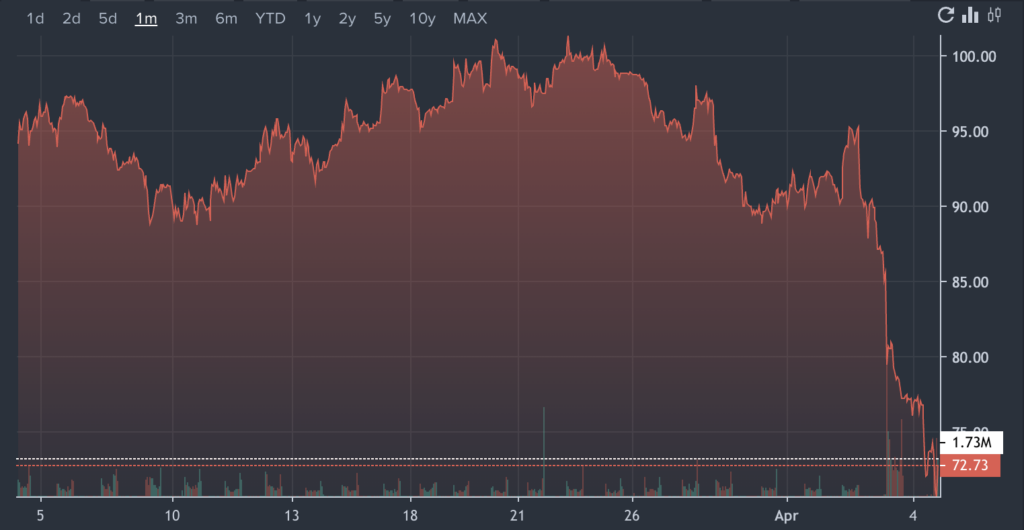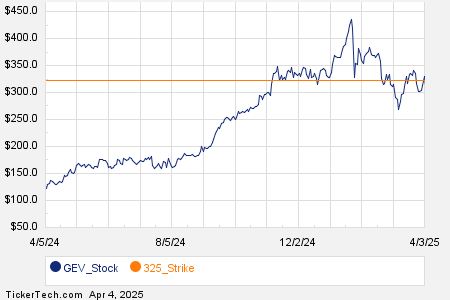Cocoa Prices Drop Sharply Amid Global Trade War Concerns
On Friday, May ICE NY cocoa (CCK25) closed down -779 (-8.38%), while May ICE London cocoa #7 (CAK25) fell -310 (-4.66%). The sharp decline in cocoa prices was driven by heightened fears of a global trade war, which sparked a risk-off sentiment in asset markets, further undercutting cocoa values. The market also grapples with concerns that escalating tariffs may dampen consumer demand for cocoa and related products. However, the losses in London cocoa were tempered as the British pound (^GBPUSD) fell to a one-month low, providing some support to cocoa priced in sterling.
Commodity Bulletin: From crude oil to coffee, this FREE newsletter is for industry pros and rookies alike
Earlier in the week, NY cocoa reached a 1-1/4 month high due to indications of a weaker mid-crop harvest in West Africa. Rabobank highlighted that late seasonal rains limited crop growth, and recent surveys from cocoa farmers in the Ivory Coast and Ghana reflected disappointing results.
Support for cocoa prices stems from worries about the Ivory Coast’s upcoming mid-crop, which is the smaller of the two annual cocoa harvests generally beginning in April. This year’s average estimate for the mid-crop is projected at 400,000 metric tons (MT), a decrease of 9% from last year’s 440,000 MT.
Additionally, recent cocoa exports from the Ivory Coast have slowed, which has helped bolster prices. According to government data released on Tuesday, farmers exported 1.44 million metric tons of cocoa from October 1 to March 30—a figure that is up 11% from last year but noticeably down from a previous 35% increase recorded in December.
Over the past seven weeks, cocoa prices remained under pressure, falling to a 4-1/2 month low on March 21 due to an improving supply outlook. On February 28, the International Cocoa Organization (ICCO) predicted a global cocoa surplus of 142,000 MT for the 2024/25 season, signaling the first surplus seen in four years. ICCO also forecasted a 7.8% year-on-year increase in global cocoa production, bringing it to 4.84 million MT.
The uptick in cocoa inventories adds to bearish pressure on prices. After reaching a 21-year low of 1,263,493 bags on January 24, ICE-monitored cocoa inventories in U.S. ports have rebounded, climbing to a five-and-a-half-month high of 1,863,172 bags this Thursday.
Concerns over demand are weighing heavily on cocoa prices. Executives from Hershey and Mondelez have noted that high cocoa prices are impacting consumer demand. Notably, on February 4, Mondelez’s CFO, Zarmella, indicated a worrisome trend in regions like North America, where cocoa consumption appears to be declining. Furthermore, on February 18, the company warned that rising cocoa prices could lead to chocolate price hikes of up to 50%, which could suppress demand. Hershey’s executives echoed these concerns on February 6, stating that the elevated cocoa prices were compelling the company to reformulate recipes by substituting cocoa with other ingredients.
Amid the negative demand outlook, Nigeria reported a strong performance on February 27, with January cocoa exports spiking 27% year-on-year to 46,970 MT. Nigeria ranks as the world’s fifth-largest cocoa producer.
High cocoa prices in the fourth quarter negatively affected demand, as evidenced by quarterly grinding reports. The European Cocoa Association reported on January 9 that Q4 European cocoa grindings fell by 5.3% year-on-year to 331,853 MT—the lowest level in more than four years. Similarly, the Cocoa Association of Asia recorded a 0.5% year-on-year decline in Q4 grindings to 210,111 MT, also marking a four-year low. The National Confectioners Association noted that Q4 North American cocoa bean grindings decreased by 1.2% year-on-year to 102,761 MT.
Support for cocoa prices may arise from reduced supplies from Ghana, the second-largest cocoa producer. Ghana’s cocoa regulator, Cocobod, adjusted its 2024/25 harvest forecast in December for the second time this season to 617,500 MT, a decline of 5% from the August estimate of 650,000 MT.
In a significant update, the ICCO announced on February 28 that the global cocoa deficit for 2023/24 reached 441,000 MT—the largest deficit in over six decades. The ICCO further reported that cocoa production in 2023/24 fell by 13.1% year-on-year to 4.380 MMT and noted that the cocoa stocks-to-grindings ratio was recorded at 27.0%, marking a 46-year low.
On the date of publication,
Rich Asplund
did not have (either directly or indirectly) positions in any of the securities mentioned in this article. All information and data in this article is solely for informational purposes. For more information please view the Barchart Disclosure Policy
here.
More news from Barchart
The views and opinions expressed herein are the views and opinions of the author and do not necessarily reflect those of Nasdaq, Inc.


